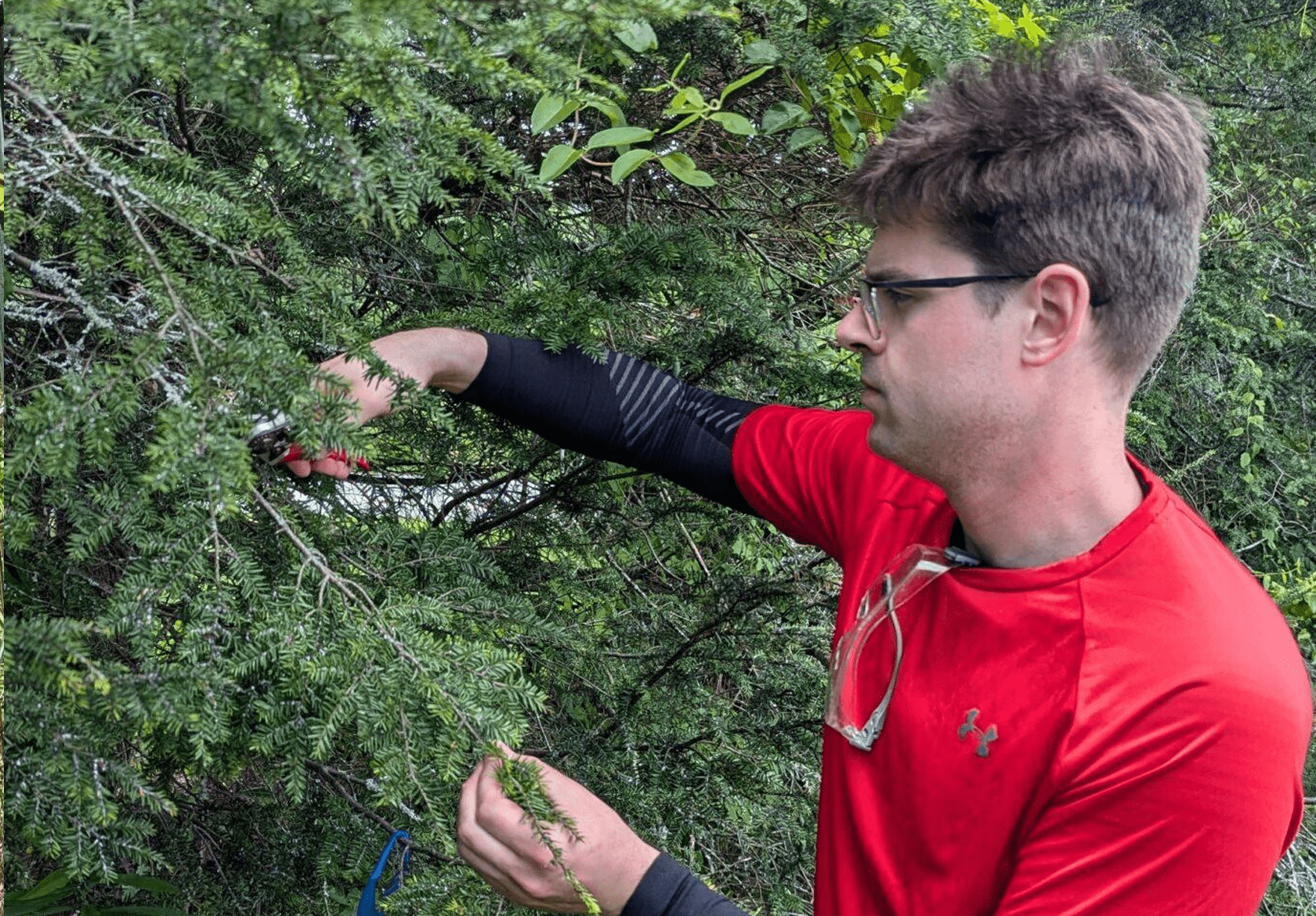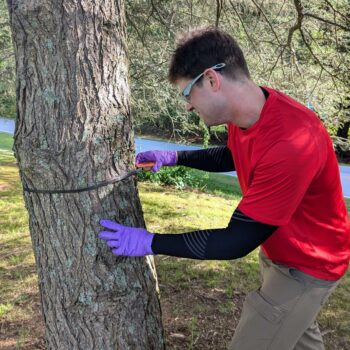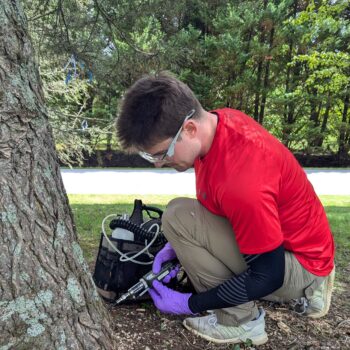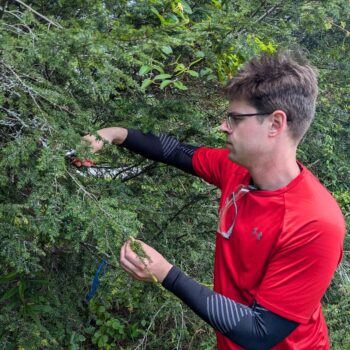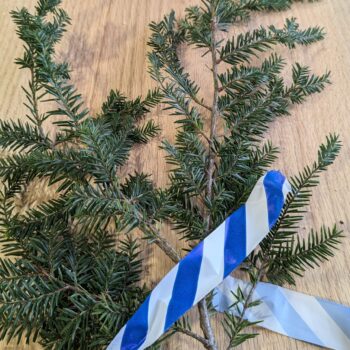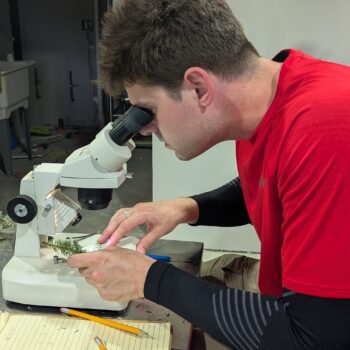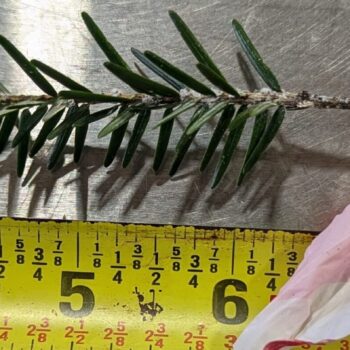Evan Sorger, Research Associate Scientist at Arborjet | Ecologel, took his skills afield visiting our farm plot in Western North Carolina. The goal was to make tree injection applications to evaluate the efficacy of new, environmentally friendly chemistries to control invasive pests in trees, to evaluate applications installed earlier in the year for Hemlock Woolly Adelgid (HWA) efficacy, and to install a new study to evaluate the activity of these actives against Japanese Beetles. Here I lay out a summary of his visit and our research.
Systemic Tree Injection
To evaluate the activity of a new chemistry, we treated trees with a standard treatment of IMA-jet with a novel non-neonicotinoid designed for systemic application. The first step in making a systemic application in trees is to install an Arborplug, a backflow prevention device that creates a site to make the liquid application. The installation of the Arborplug is perhaps the most technical aspect of tree injection. To install the Arborplug correctly, a drill hole is made into the conductive sapwood of the tree. Wed made our applications directly into the root flares, as is recommended.
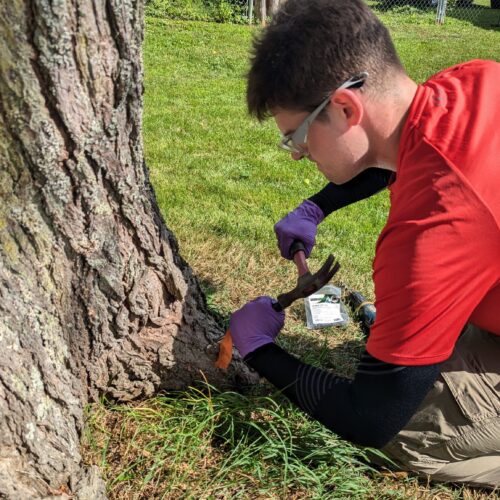
The number of injection points to install around the base of the tree is determined by the tree’s diameter. Using a D-tape, (which converts the circumference to diameter) is quickest and easiest. The number of points to install is determined by dividing the diameter taking at breast height (54” from ground level) by two. For example, a tree with a DBH of 16”, will need 8 injection points (16” DBH/2 = 8). Once your injection sites are made, applying a liquid formulation is easy using the QUIK-jet AIR. We applied 5 mLs per injection point.
Evaluating Efficacy of New Chemistries
Earlier in the year, we made applications of newly designed formulations to evaluate their effectiveness against Hemlock Woolly Adelgid. The Adelgid is an introduced pest from Japan that, left untreated, will cause trees to decline and eventually die off. Adelgid is a piercing-sucking insect that feeds on the parenchyma, the living cells within the plant that store sugars and carbohydrates. Though microscopic, they reproduce seemingly without limit (embryos can develop without fertilization, resulting in rapid population growth). As they increase in numbers, tree growth decreases.
Our evaluations will therefore study both Adelgid numbers and tree growth. These metrics may be used to determine overall Adelgid densities. These densities can then be compared across treatments. As in all good scientific studies, there is a control group, which in this case is infested trees that receive no treatment at all! The first step in our study is to take branch samples from all test groups that include at least the last three years of growth.
HWA counts are made under a dissecting microscope. Measurements of annual twig growth for the most recent three years are recorded using a tape measure or ruler. By conducting these assessments, we can determine the comparative effectiveness of treatments, which help us to select the products that are most active and have a good spectrum of activity.
Installing a New Field Study
We had the opportunity to install a new study to determine a formulations’ activity against Japanese Beetle adults. In this study we established four treatments, all with new active ingredients. Once a formulation is developed, applications in the field will help determine the products’ overall effectiveness, whether done applied as a foliar treatment or tree injection. This is a simplified snapshot of what goes into the research and development of products for the tree care and landscape care industries!
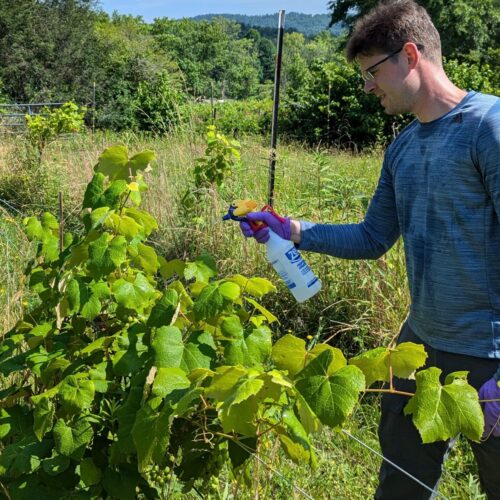
Next time, we’ll get into more summer topics.
~ Signing off for now, Joe

